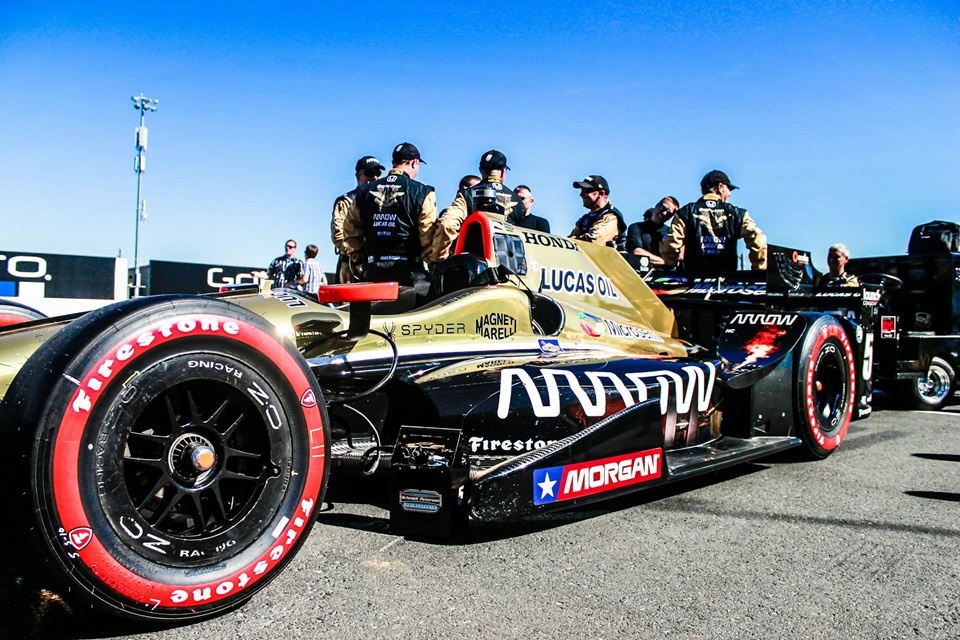The world of Formula 1 revolves around intense competition, cutting-edge technology, and most importantly, the F1 standings that determine who claims the ultimate prize in motorsport. Whether you’re a seasoned fan or new to the sport, understanding how these championship rankings work is crucial to appreciating the strategic battles that unfold throughout each racing season.
From the driver who crosses the finish line first to the constructors fighting for team supremacy, the F1 standings system creates drama, excitement, and nail-biting finishes that keep millions of fans around the world glued to their screens. This comprehensive guide will walk you through everything you need to know about Formula 1 championship standings, points systems, and what makes these rankings so captivating.
Understanding the F1 Points System
How Points Are Awarded in Formula 1
The current F1 points system rewards consistency and excellence, with points distributed to the top 10 finishers in each Grand Prix race. Here’s the breakdown of how drivers and teams accumulate points:
Standard Race Points Distribution:
- 1st place: 25 points
- 2nd place: 18 points
- 3rd place: 15 points
- 4th place: 12 points
- 5th place: 10 points
- 6th place: 8 points
- 7th place: 6 points
- 8th place: 4 points
- 9th place: 2 points
- 10th place: 1 point
Sprint Race Points System
Formula 1 also features Sprint races during select weekends, which offer additional opportunities to score points. The Sprint race points system operates differently:
Sprint Race Points:
- 1st place: 8 points
- 2nd place: 7 points
- 3rd place: 6 points
- 4th place: 5 points
- 5th place: 4 points
- 6th place: 3 points
- 7th place: 2 points
- 8th place: 1 point
This system ensures that even Sprint races contribute meaningfully to the overall F1 standings while maintaining the primary importance of the main Grand Prix events.
The Two Championship Battles
Drivers’ Championship Standings
The Drivers’ Championship represents the individual battle between the world’s elite racing drivers. Each driver accumulates points throughout the season based on their finishing positions in races. The beauty of the F1 standings system lies in rewarding not just race wins, but consistent high-level performance throughout the entire season.
Key aspects of the Drivers’ Championship include:
- Individual Achievement: Each driver’s points are counted separately, regardless of team performance
- Season-Long Battle: Consistency often trumps occasional brilliance
- Tiebreaker Rules: If drivers finish with equal points, the one with more race wins takes precedence
Constructors’ Championship in F1 Standings
The Constructors’ Championship focuses on team performance, combining the points scored by both drivers from each team. This creates fascinating strategic dynamics where teams must balance supporting their lead driver while maximizing points from both cars.
How Constructors’ Points Work:
- Both team drivers’ points are added together
- Teams benefit from having two competitive drivers
- Strategic decisions often prioritize constructor points over individual glory
- Prize money and prestige depend heavily on constructor standings
Factors That Influence F1 Standings
Race Performance and Consistency
Success in F1 standings isn’t just about winning races – it’s about maintaining consistent performance across an entire season. Drivers who regularly finish in points-paying positions often outperform those who win occasionally but suffer frequent retirements or poor results.
Technical Regulations and Car Performance
The technical aspects of Formula 1 significantly impact standings throughout the season:
- Car Development: Teams continuously upgrade their vehicles
- Regulation Changes: New rules can shift competitive balance
- Reliability: Mechanical failures can devastate championship hopes
- Track-Specific Performance: Some cars excel at certain circuit types
Strategic Elements Affecting Standings
Modern F1 standings are influenced by numerous strategic considerations:
Race Strategy:
- Tire selection and pit stop timing
- Fuel load management
- Weather condition adaptations
- Risk versus reward calculations
Championship Strategy:
- Managing points gaps late in the season
- Team orders and driver support
- Balancing aggression with consistency
- Long-term development priorities
How to Follow and Interpret F1 Standings
Reading Championship Tables
Understanding F1 standings tables helps fans track the championship battle more effectively:
- Points Gap Analysis: Look at the mathematical possibilities for title fights
- Trend Recognition: Identify which drivers/teams are gaining or losing momentum
- Season Context: Consider remaining races and typical performance at upcoming tracks
Key Statistics to Monitor
Beyond basic points totals, several metrics provide deeper insights into F1 standings:
- Points per race average
- Podium finish percentages
- DNF (Did Not Finish) rates
- Qualifying position trends
- Head-to-head teammate comparisons
Historical Context of F1 Standings Systems
Evolution of Points Systems
The current points system has evolved significantly since Formula 1’s inception. Understanding this evolution helps appreciate why the modern system effectively determines champions:
Major Changes Over Time:
- Early seasons: Points only for top 5 finishers
- 1991-2002: 10 points for victories, 6 for second place
- 2003-2009: Increased points distribution
- 2010-present: Current 25-point victory system
Impact on Championship Battles
The expanded points system has created more competitive F1 standings by:
- Rewarding midfield performances
- Reducing the impact of single DNFs
- Encouraging closer racing throughout the field
- Making late-season comebacks more feasible
Analyzing Current Season Standings
Tracking Championship Momentum
Successful championship campaigns in F1 standings often follow recognizable patterns:
- Early Season: Establishing competitive baseline
- Mid-Season: Building consistent points scoring
- Championship Phase: Managing pressure and maximizing opportunities
- Season Finale: Closing out titles or mounting final challenges
Team Dynamics and F1 Standings
The relationship between teammates significantly influences constructor standings:
- Number 1 and 2 Driver Dynamics: How teams manage driver priorities
- Equal Treatment Policies: Some teams allow open competition
- Strategic Sacrifices: Using one driver to benefit the other’s championship hopes
- Development Focus: Resource allocation between drivers
Technology and Modern F1 Standings
Data Analytics in Championship Battles
Modern Formula 1 teams use sophisticated analytics to optimize their championship campaigns:
Performance Metrics:
- Sector time analysis
- Tire degradation modeling
- Fuel consumption optimization
- Weather condition adaptations
Strategic Planning:
- Race simulation modeling
- Championship scenario planning
- Risk assessment algorithms
- Resource allocation optimization
Media and Fan Engagement
The digital age has transformed how fans engage with F1 standings:
- Real-time updates during race weekends
- Interactive championship calculators
- Social media integration and discussions
- Fantasy racing based on actual standings
FAQs About F1 Standings
A: Official F1 standings are updated after each qualifying session and race, typically within hours of the checkered flag.
A: Yes, drivers retain their championship points when switching teams, but their previous points don’t transfer to the new constructor.
A: Tiebreakers prioritize race wins first, then second-place finishes, and so on until the tie is broken.
A: Yes, if a reserve driver competes in a race, any points they score count toward their team’s constructor total.
A: Time penalties can change finishing positions and thus affect points awarded, while grid penalties for future races don’t directly impact current standings.
The Future of F1 Standings
Potential System Changes
Formula 1 continuously evaluates its points system to maintain competitive excitement:
- Sprint race expansion and points adjustments
- Reverse grid proposals for increased competition
- Budget cap implications on championship battles
- Sustainability initiatives affecting car development
Emerging Trends
Several trends are shaping the future landscape of F1 standings:
- Closer Competition: Technical regulations aimed at reducing performance gaps
- Strategic Complexity: Increasing importance of race strategy
- Driver Development: More opportunities for young talent
- Global Expansion: New markets and racing venues
Conclusion
Understanding F1 standings goes far beyond simply knowing who’s leading the championship. The intricate points system, strategic considerations, and competitive dynamics create a complex ecosystem where every point matters and championships can swing dramatically based on individual race performances.
Whether you’re following the intense battle for the drivers’ title or tracking your favorite team’s progress in the constructors’ championship, the F1 standings system ensures that every race weekend contributes to an overarching narrative of excellence, competition, and sporting drama.
The evolution of Formula 1’s points system has successfully created scenarios where consistent performance is rewarded while still maintaining the premium value of race victories. This balance keeps championship battles alive deeper into seasons and provides multiple storylines for fans to follow.
As Formula 1 continues to grow globally and attract new audiences, the standings system remains the heartbeat of the sport – a clear, quantifiable measure of success that transforms individual race results into season-long narratives that captivate millions of motorsport enthusiasts worldwide.
Stay updated with the latest F1 standings throughout the season, analyze the strategic implications of each race result, and join the global conversation about one of the world’s most prestigious sporting championships. The numbers tell the story, but the drama unfolds every time these incredible machines hit the track in pursuit of championship glory.











